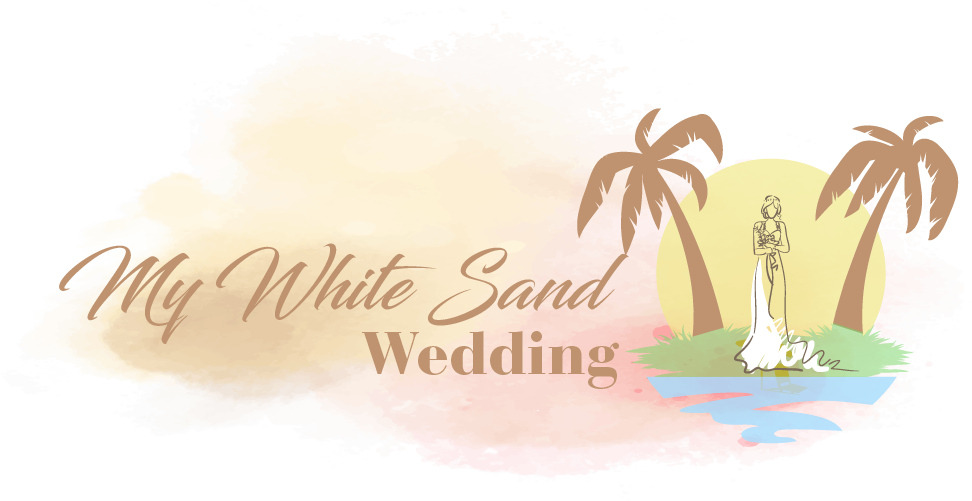Weddings are as old as modern humans; their ceremony and traditions have been a thing for many millennia.
So, it is not too surprising that the various parts of a wedding have their own traditions. From wedding cakes to wedding dresses, wedding rings, couple send-offs, and vows, there is some tradition attached to each one.

Interestingly, many things you consider wedding traditions may not actually be traditions. Some of them are myths.
For instance, some people think that wedding dresses of some colors signify bad luck. But that is not entirely true.
If a myth stays unveiled for too long, it becomes a tradition. So, you should not be shocked that many of the wedding dress traditions you know are myths.
Below, we discuss ten wedding dress myths and traditions. When done reading, you will be able to tell some actual wedding dress customs from the mythical ones.
Table of Contents
6 Wedding Dress Myths
It Is Bad Luck to See Your Bride in Her Wedding Dress Before the Ceremony
People sometimes ask questions like, “Is it bad luck to see your bride’s dress?” or “Can I show my husband my wedding dress?”
They ask these questions because of the myth that if a groom sees the bride’s wedding dress before the ceremony, it is bad luck.
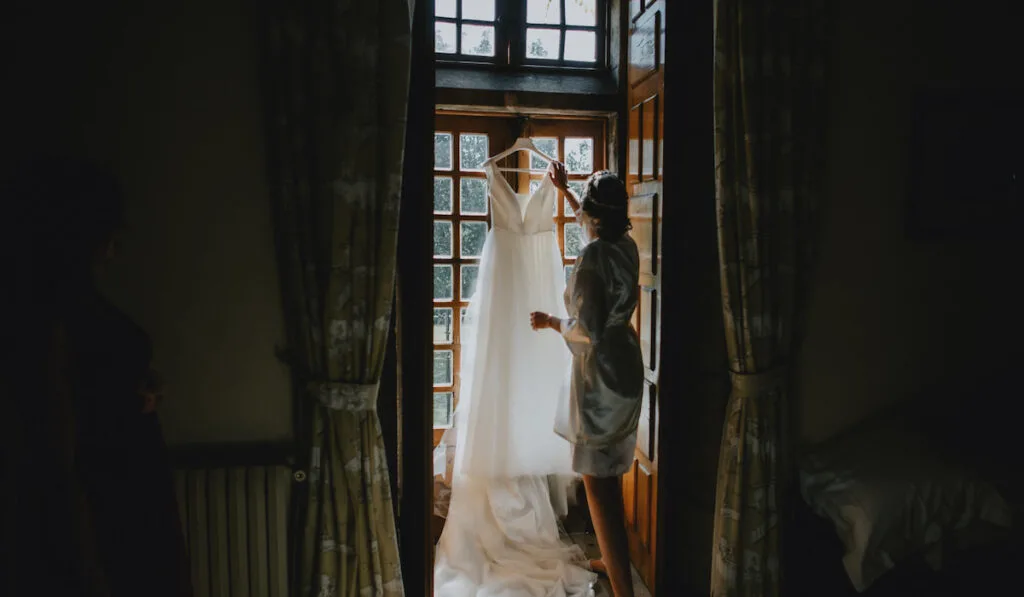
Seeing your bride in her wedding dress before the ceremony is not bad luck. The “not seeing the bride in her wedding dress” myth stems from a fail-safe custom from centuries back.
When arranged marriages were common, couples were not allowed to see each other before the wedding. In other words, they did not meet each other before the wedding.
This was to prevent a situation where the groom sees the bride, becomes uninterested, and calls off the wedding. Basically, it was a fail-safe to ensure the ceremony happened.
Besides keeping the couple from meeting before the wedding, brides’ veils were also part of the fail-safe strategy described above.
Arranged marriages are not as common as they used to be. These days, it is less a custom and more a choice. However, couples still practice the custom of not seeing each other before the wedding – even for non-arranged marriages.
Some couples think it is exciting not to see each other in the hours before the wedding, so they choose to follow the custom. Others would rather have a brief nerve-calming moment together before the wedding.
Some Wedding Dress Colors Are Bad Luck
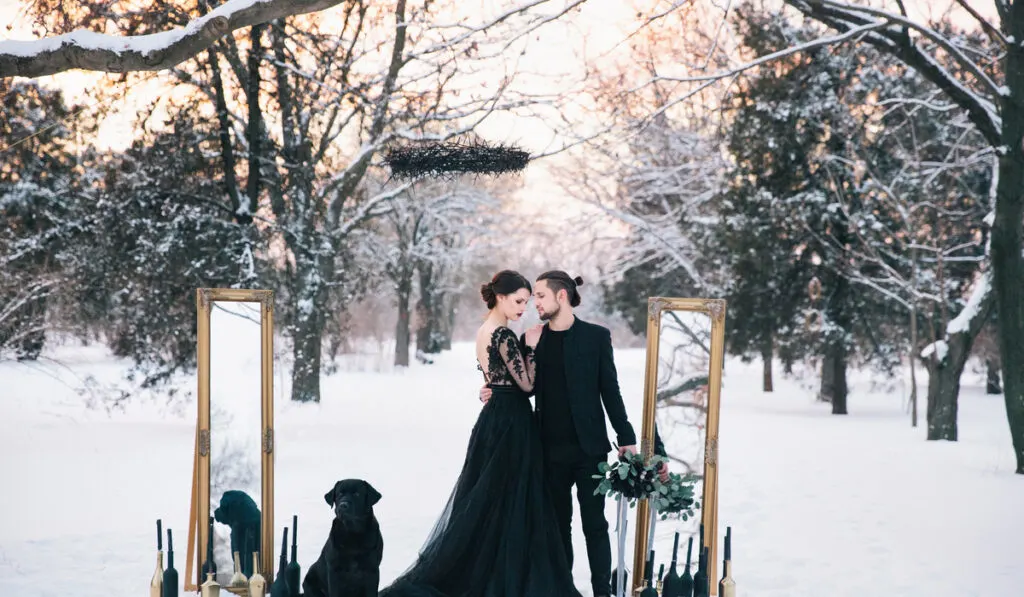
People probably say that wedding dresses in particular colors can bring misfortune. But is this really true? What color wedding dress is bad luck?
The color of your wedding dress does not determine how your marriage will turn out.
In other words, wearing a yellow, black, pink, green, red, or grey dress will not bring bad luck. So, if you do not want to wear a white wedding dress as is expected, you do not have to.
The Wedding Dress Must Echo the Bride’s Nature
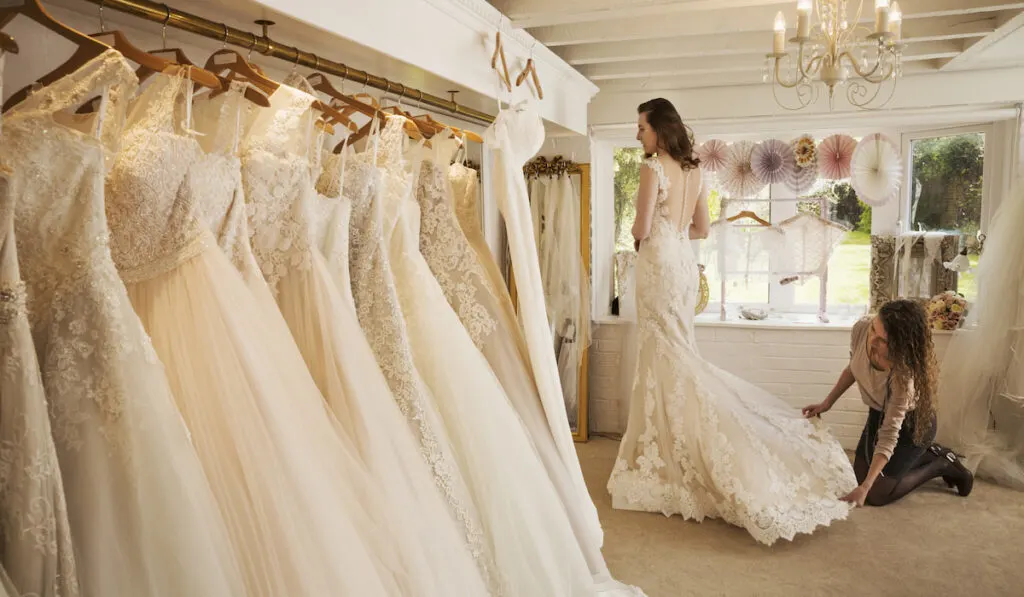
These days, people typically put in so much effort to find and choose a wedding dress. Much of this fervor stems from the fact that many brides believe their dress must perfectly echo their personality.
But if it isn’t one’s desire, getting a perfect wedding dress is not compulsory.
The thought that a wedding dress must represent the bride’s nature is a modern notion, not necessarily tradition.
Other people could select the wedding dress for the bride. It could be the parents, the groom’s family, matchmakers, and other people in similar positions.
A Spider on Your Wedding Dress Is Good Luck
In ancient England, there was a belief that seeing a spider on your wedding dress was a good omen.
If you promise not to freak out or squash the spider so quickly, you may or may not see what they meant.
Cross-Dressing on Your Wedding Will Ward off Evil Spirits
In the past, it was culture for couples to cross-dress. The idea behind this custom was that if couples cross-dressed, they’d confuse evil spirits and ultimately elude them.
Matching Dresses With the Bridesmaid Brings Good Luck
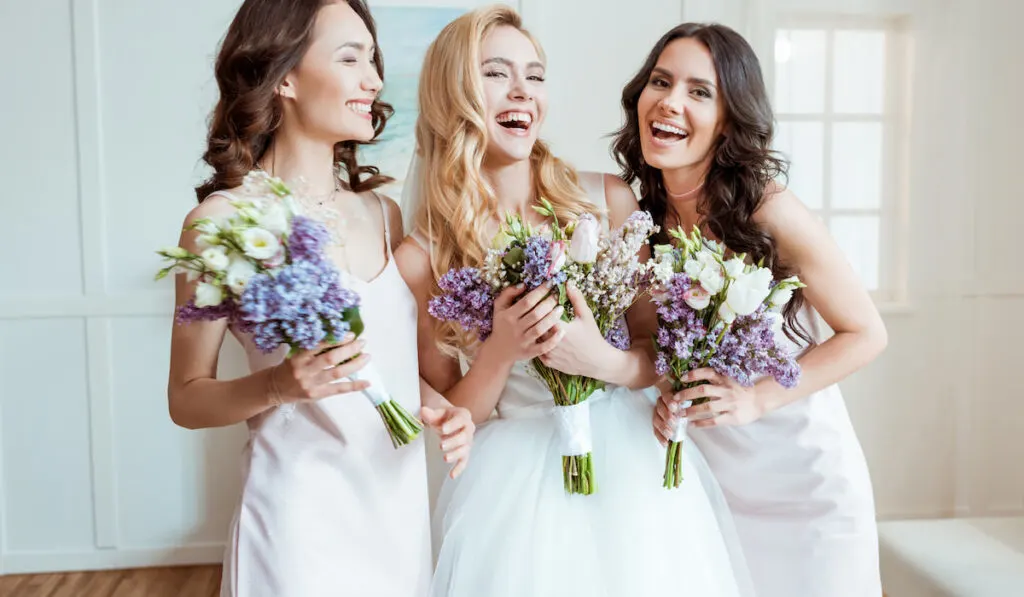
The custom of the bridesmaids wearing the same dresses as the bride stems from ancient Roman culture.
As with the cross-dressing custom, if the bridesmaid adorned themselves like the bride, they’d confuse the evil spirits. With the evil spirits out of the way, good luck will find its way into the marriage.
While this custom may or may not be consequential to your marriage, matching dresses with the bridesmaid can be a beautiful sight.
So, if you want, you can wear a similar dress or the same dress with your bridesmaids.
4 Wedding Dress Traditions
A White Wedding Dress Means Virginity
Like us, if you are curious, you’ve probably asked yourself, “Does a white dress represent virginity?”
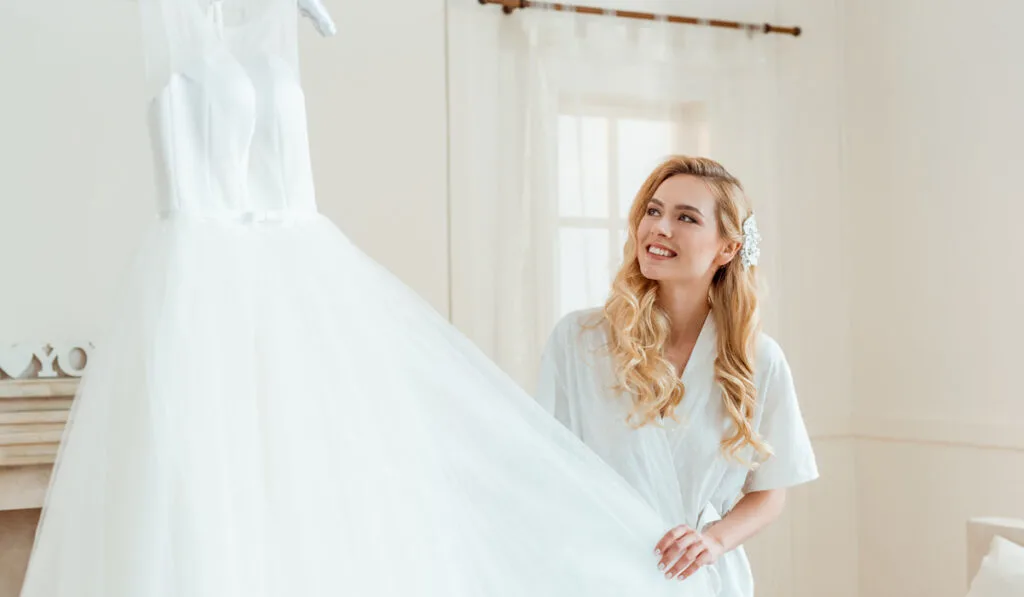
Depending on the culture, white wedding dresses do not necessarily signify virginity, purity, or a similar concept.
The use of white wedding dresses started at a time when buying and maintaining one was expensive. So, they were largely a thing of wealth and status.
But things changed after the Industrial Revolution. White wedding dresses became less luxurious, and more people could afford them. They also became even more popular as technological advances in media sprung up.
Queen Victoria gets the credit for the popularity of white wedding dresses after the Industrial Revolution. Records show she wore one when she married Prince Albert in 1840.
The symbols of purity and virginity vary across cultures. In England, the Marian blue color was symbolic of the Virgin Mary. So, it represented virginity and purity.
Interestingly, the color white symbolizes mourning in French, Chinese, Indian, and many other cultures.
Wedding Veils
In ancient Greek and Roman culture, it was tradition for brides to wear a veil to ward off evil spirits.
As the Bride, You Must Wear Something Old, Something New, Something Borrowed, and Something Blue
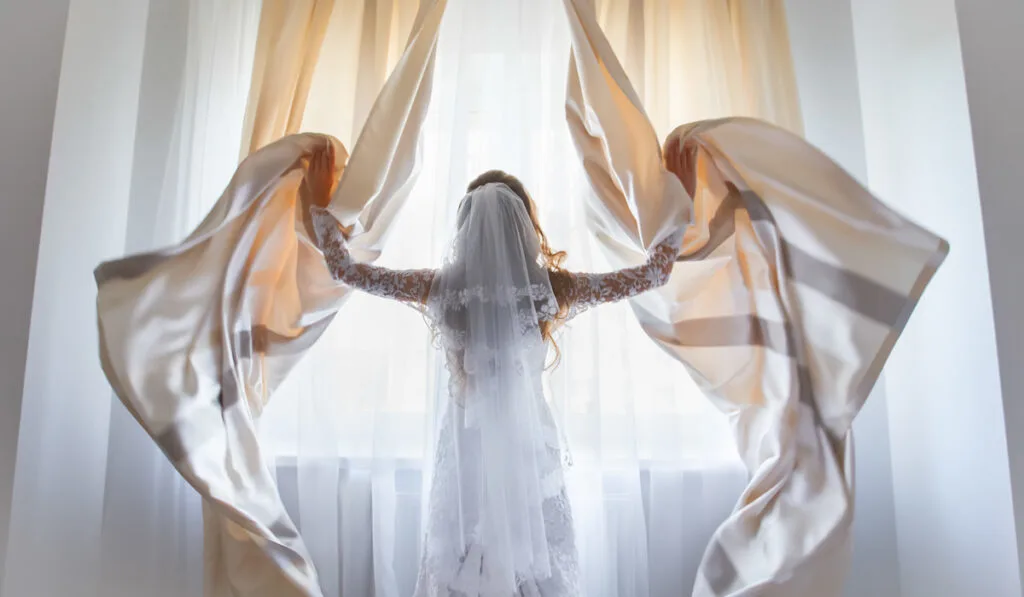
Each part of the rhyme above (the subheading) raises goodwill to the couple. It’s also a tradition that has been around for quite a while.
The “something old” the brides wore was an old garter from a woman in a happy marriage. It symbolized continuity – that the new bride would have a happy marriage like the woman who gave her the gift.
The “something new” partly represented an optimistic future. It symbolized that the union would bring joy, success, comfort, and health.
For the “something borrowed” part, the bride would get an item from her friend or family. This part of the rhyme symbolized borrowed happiness. It also represented the token of the love the bride shares with the lender.
The “something blue” part symbolized loyalty and love. It stemmed from an ancient Israeli custom where brides added a blue ribbon to their hair, confirming their fidelity to the groom.
The rhyme ends with “…, and a silver sixpence in her shoe”. The sixpence in the bride’s shoe was a way to will good luck into her life.
It’s Bad Luck for the Bride to Wear Her Wedding Dress Before the Wedding
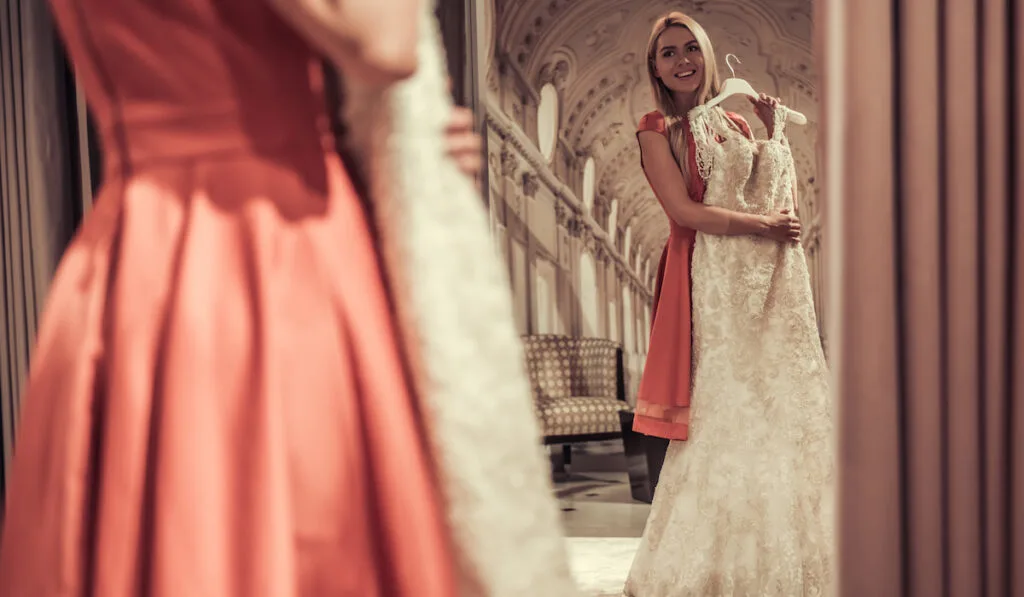
A Filipino tradition advises against the bride wearing her dress before the wedding. It says that if the bride wears her wedding dress before the ceremony, the marriage will not happen.
Resources
- https://daily.jstor.org/a-natural-history-of-the-wedding-dress/
- https://www.brides.com/story/surprising-facts-wedding-traditions
- https://www.funeralguide.net/blog/mourning-colours
- https://www.mywedding.com/dresses/wedding/4-wedding-dress-myths-and-traditions-that-keep-brides-from-going-green/
- https://www.bridalguide.com/planning/wedding-ceremony-traditions/wedding-superstitions
- https://www.kleinfeldbridal.com/2016/05/13/wedding-superstitions/
- https://www.loveandlavender.com/wedding-superstitions/
